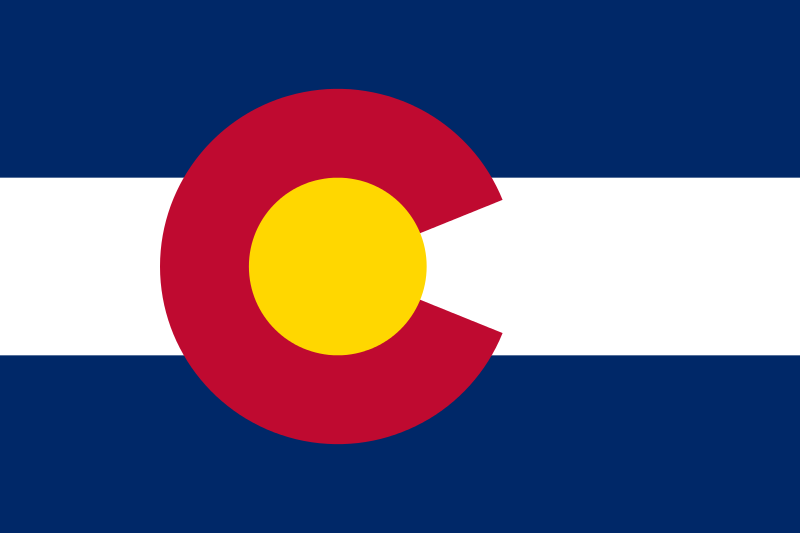State Flag
Full Article
The state flag was adopted on June 5, 1911 by an act of the General Assembly. The flag was adopted to be used on all occasions when the state is officially and publicly represented, with the privilege of use by all citizens upon such occasions as they deem fitting and appropriate. Laws pertaining to use of the national flag are also applicable to use of the state flag.
The flag consists of three alternate stripes of equal width and at right angles to the staff, the two outer stripes to be blue of the same color as in the blue field of the national flag and the middle stripe to be white, the proportion of the flag being a width of two-thirds of its length. At a distance from the staff end of the flag of one fifth of the total length of the flag there is a circular red C, of the same color as the red in the national flag of the United States. The diameter of the letter is two-thirds of the width of the flag. The inner line of the opening of the letter C is three-fourths of the width of its body or bar, and the outer line of the opening is double the length of the inner line thereof. Completely filling the open space inside the letter C is a golden disk, attached to the flag is a cord of gold and silver, intertwined, with tassels, one of gold and one of silver.
The flag was originally designed by Andrew Carlisle Johnson. Precise colors of red and blue were not designated in the 1911 legislation and some controversy arose over these colors. On February 28, 1929, the General Assembly stipulated the precise colors of red and blue as the same as the national flag. Controversy also arose over the size of the letter C and on March 31, 1964, the General Assembly further modified the 1911 legislation by revising the distance from the staff for the letter C and its diameter.
Flag Chronology
The geographical territory which comprises the present-day state of Colorado has historically been under many flags.
- Coronado's expedition into the Southwest in 1540-42 gave some substance to Spain's claim to the entire western interior region of what would become the United States.
- In 1662, when LaSalle floated down the Mississippi River, he claimed for the French King the entire drainage area of the "Father of Waters,” which included a substantial area of Colorado.
- During the seventeenth and eighteenth centuries, the British Colonies of New England and Virginia extended their theoretical boundaries all the way to the Pacific coast, overlapping the French and Spanish claims.
- Between 1763 and 1848, France, Spain, Mexico, and the Republic of Texas all claimed varying proportions of Colorado.
- In 1803, when Napoleon withdrew his claims to the West and negotiated the Louisiana Purchase, a part of Colorado came under US jurisdiction for the first time.
- Between 1803 and 1861, present-day Colorado saw flags of the District of Louisiana (part of Indiana Territory), Territory of Louisiana, Missouri Territory, the State of Deseret (predecessor to Utah), Utah Territory, New Mexico Territory, Nebraska Territory, and Kansas Territory.
- On February 28, 1861, when Colorado Territory was created, the present boundaries were established and have remained unchanged.
- On August 1, 1876, Colorado became the thirty-eighth state to enter the Union under the flag of the United States.


